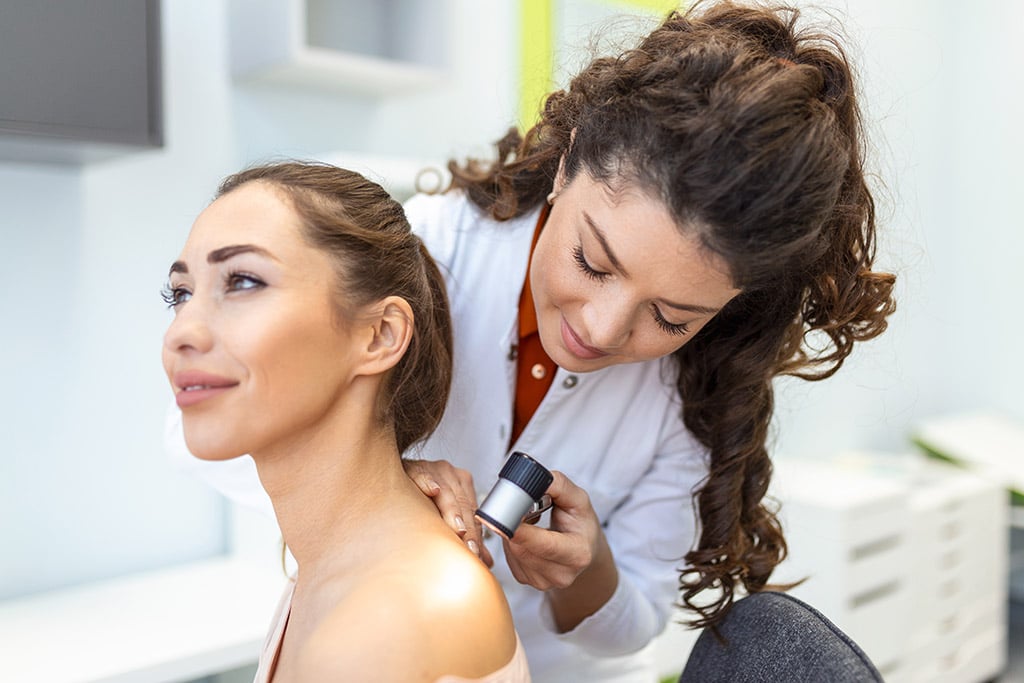Consistent Full Body Skin Exams
Full Body Skin Exams performed on a regular basis are important for detecting skin cancers early. Depending on your personal and family history of skin cancer, your doctor may wish to fully examine your skin every 3, 6, or 12 months. A full body skin exam should include examination of your scalp, face, ears, neck, chest, back, abdomen, buttocks, groin, arms, legs, wrists, and feet. In addition, examination inside should be performed and lymph nodes may be examined if you have a history of some types of skin cancer.
Dermoscopy
Your physician may use a special magnifying light called a dermatoscope when examining your skin. These devices are particularly useful for examining moles. They allow your doctor to see pigment architecture below the skin’s surface. Seeing this architecture in more detail helps your doctor determine if the mole is suspicious and might warrant a skin biopsy.
Self-skin exams
With an organized approach, self-skin exams are an important method for routinely checking your skin. We recommend that you examine your own skin at least once monthly for any new or changing lesions. The sooner you recognize that something is new or changing on your skin, the sooner you can get it checked out by your dermatologist. Learn how to perform a thorough self-skin exam here.
Diagnosis
Definitive diagnosis of a skin cancer requires a diagnostic biopsy. A skin biopsy is a minor outpatient procedure. The lesion to be biopsied is marked and numbed with local anesthesia (lidocaine). Then a small tool or blade is used to remove a shallow portion of the lesion. Because only a sample is biopsied, this helps minimize scarring if the lesion turns out to be benign and not concerning. If the lesion is malignant or cancerous, it will likely need additional treatment to remove the cancer’s roots.






